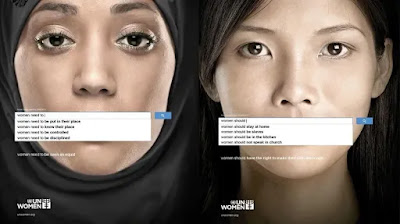These are tricky times for content creators. Capturing and retaining an audience’s attention is a challenge in this day and age. Good thing there’s a way to provide a bit of respite from the never-ending sea of words and letters: visual storytelling.
We already know what storytelling is, but how does it differ from its cousin, visual storytelling? In this post, we’ll tell you everything you need to know about the power of visual storytelling and how to apply it to your brand.
What is visual storytelling?
Images, graphics, photography, video, interactivity, animation… these are the words that can best define what visual storytelling is—a technique whose objective is to truly engage the audience thanks to a visually attractive narrative.
This way, the brand can establish a connection with people that’s stronger than the connection between summer and ice cream. This connection is achieved by using resources that captivate and connect with people on a deep level and create an experience that leaves a lasting impression.
Take a look at this UN Women campaign, in which they wanted to impact their audience through visual storytelling.
How to make visual storytelling work for your brand
Know your audience inside out.
Who are we talking to? It’s essential to answer this question before you start creating visual content. Research and analyze your audience to understand what they need, what they’re interested in, and what their preferences are. This will give you a leg up when it comes to creating visual stories that make them tick.
Define the message to a T.
Knowing the core message we want to convey through visual storytelling is critical. What do you want your audience to remember after consuming your content? Whether it is to advertise a specific product, convey emotions, or embody a set of values, make sure that the objective you set is clear and defined before you start.
Format is everything.
Static images, infographics, videos, animations... The different ways we can tell stories are endless. That’s why it’s very important to know how to choose the format that will best suit your message and the audience that consumes it.
Visually appealing content, always
Visual elements such as high-quality images, eye-catching graphics, or captivating colors can be the key to capturing the attention of your audience and making an impact. It’s also important to make sure your visual content is consistent with your brand identity and, of course, communicates the message you want to convey clearly and concisely.
Choose your channels.
You’ve got the message; now spread the word! Take advantage of the different channels so that everyone sees your content: blog, web, social media, etc.Any format that is relevant to your target audience. Remember to adapt the content to each platform: format, size, technical or design requirements, etc.
Tips for applying visual storytelling that’ll help you hit the big time
It’s not just us saying so; studies show that content with images is viewed 94% more. Here are some tips and templates that will help you apply visual storytelling quickly, easily, and, of course, successfully.
- Draw from popular culture.
Movies, books, memes, artists... Borrow the language of popular culture to create a strategy with visual storytelling. The idea is to choose a central idea and choose the right image to represent it. This way, your audience will connect emotionally with your creation in no time.
Take a look at this interactive image about women writers; it’ll inspire you at the speed of light.
- Develop meta-stories
Subplots have always been part of the content we’ve consumed over the years, so why not also include stories within stories in your visual storytelling strategy?
This way, you can create an experience for your audience that fulfills the initial objective and, at the same time, captures their attention and sticks around in their memory. Of course, never forget your brand’s positioning, purpose, values, and ideas.
Check out this template and tell a story with a fun game:
Read More : 2.35 GPA to Percentage
- Show, don’t tell.
Simplicity, conciseness, and clarity. Simplify the information. In visual storytelling, the fewer words, the better. Be the Mr. Bean of digital content. There is a lot of power in using visual elements to communicate things that are easily understood without words.
This creation is ideal for saying many things with a few words:
The benefits of visual storytelling for your brand
Did you know that people remember 10% of what they hear, 20% of what they read, and 80% of what they see or experience? The power of visual storytelling lies fundamentally in how our brains work.
These are the main benefits of applying visual storytelling to your strategy:
- It makes life easier for the customer or user. Simply put, absorbing content requires less effort if it is conveyed visually. Make it easy for them; the brain is able to process images up to 60,000 times faster than text.
- It improves engagement on social media. Visual storytelling makes your message stick in the audience’s brain. Fun fact: photos increase user interactions on Facebook by up to 87%, and videos by another 65% more than images.
- It increases brand recall. A good story stays in your brain, but one that is visual and well told stays etched in your heart. Remember: even when it comes to displaying data, the most effective way to keep winning your audience over is by using visual formats.
- It allows you to differentiate yourself from the competition. Your brand’s visual content speaks volumes about it, whether you like it or not. Therefore, it is essential to keep a close eye on the design and be aware of the story that the visuals you use are telling.

